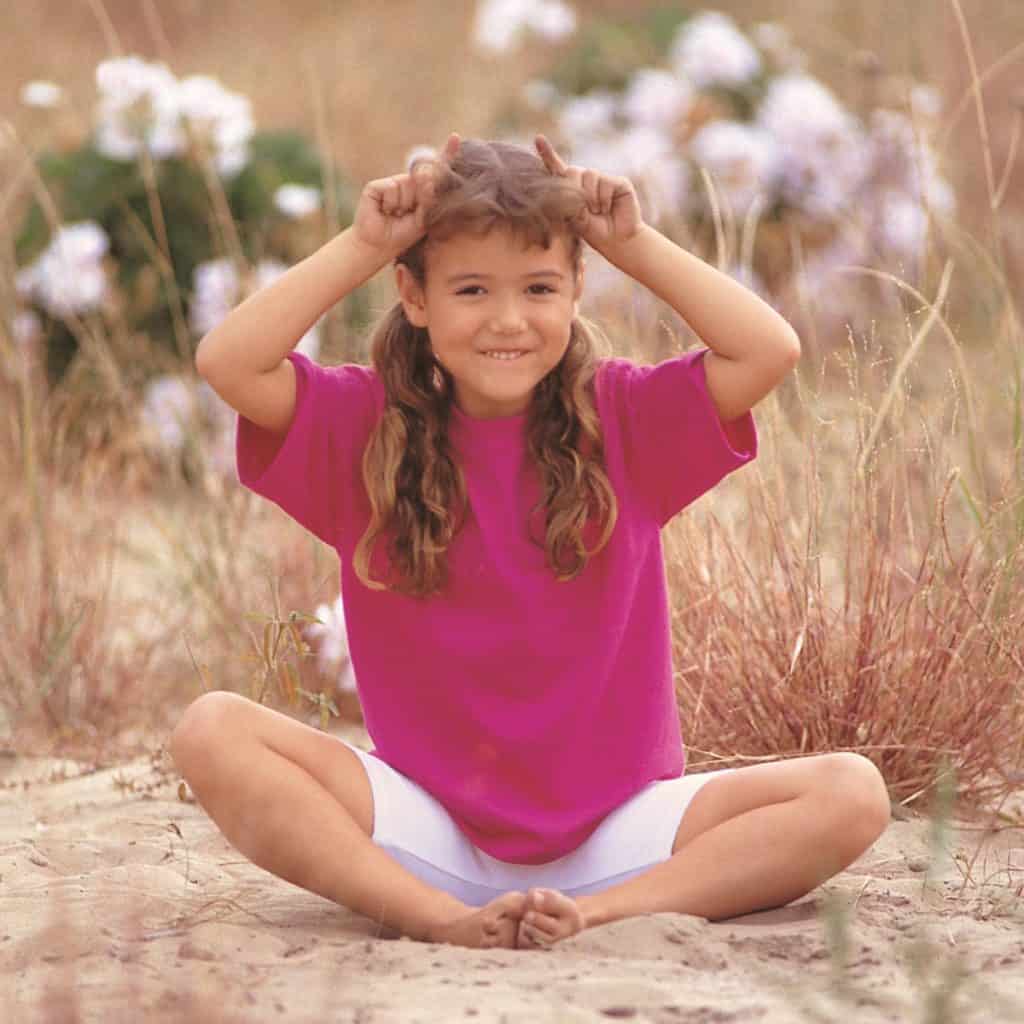Crows are very intelligent animals. Like parrots, they can be trained to mimic our voices. They are known for their good memories and fascination with shiny objects. They love to play and play tricks!
Instructions
Begin in mountain pose with your feet wide. Bend your knees and squat down. Place your arms to the inside of your bent legs and press your hands with outstretched fingers into the floor. Lean slightly forward. Bend your elbows outward to make a shelf for your knees. Raise onto your tippy toes and place your left knee on your left “arm shelf.’ Then carefully place your right knee on your right “arm shelf.’ In the beginning, you may only lift one foot at a time off the floor. With patience and practice, you will balance in the crow. As you do, see if you can increase the time of this pose.
Note for Parents and Teachers
This is a difficult pose that requires strength and focus. It builds self-esteem and confidence and strengthens the arms. It even tones the organs of the belly, because the abdominal muscles automatically contract in order to maintain balance.
With children under five years old, getting up into the actual balance part of the pose is generally impossible. But, you can follow the instructions and guide them in the steps to teach them patience and determination.
Activities for Home and School
Bridge Of Diamonds
Crows, like some other kinds of birds, build their nests in communities. During the summer, they roost and flock together, hanging with their families. What do you do with your family in the summertime? YogaKids encourages family and community participation. There is much to learn when studying and observing our feathered friends.
Musical Medley
Their courtship ritual consists of dramatic flight shows, bowing, strutting and puffing of their feathers to impress their mates. Along with their bird dance, they sing a song that sounds like a rattle. Can you sing and dance in this pose?
Ecological Echoes
Crows are omnivorous. This means they eat both plants and animals. Insects, eggs, small mammals, reptiles, carrion, seeds. corn, fruits and nuts. Which of these foods do you eat?










